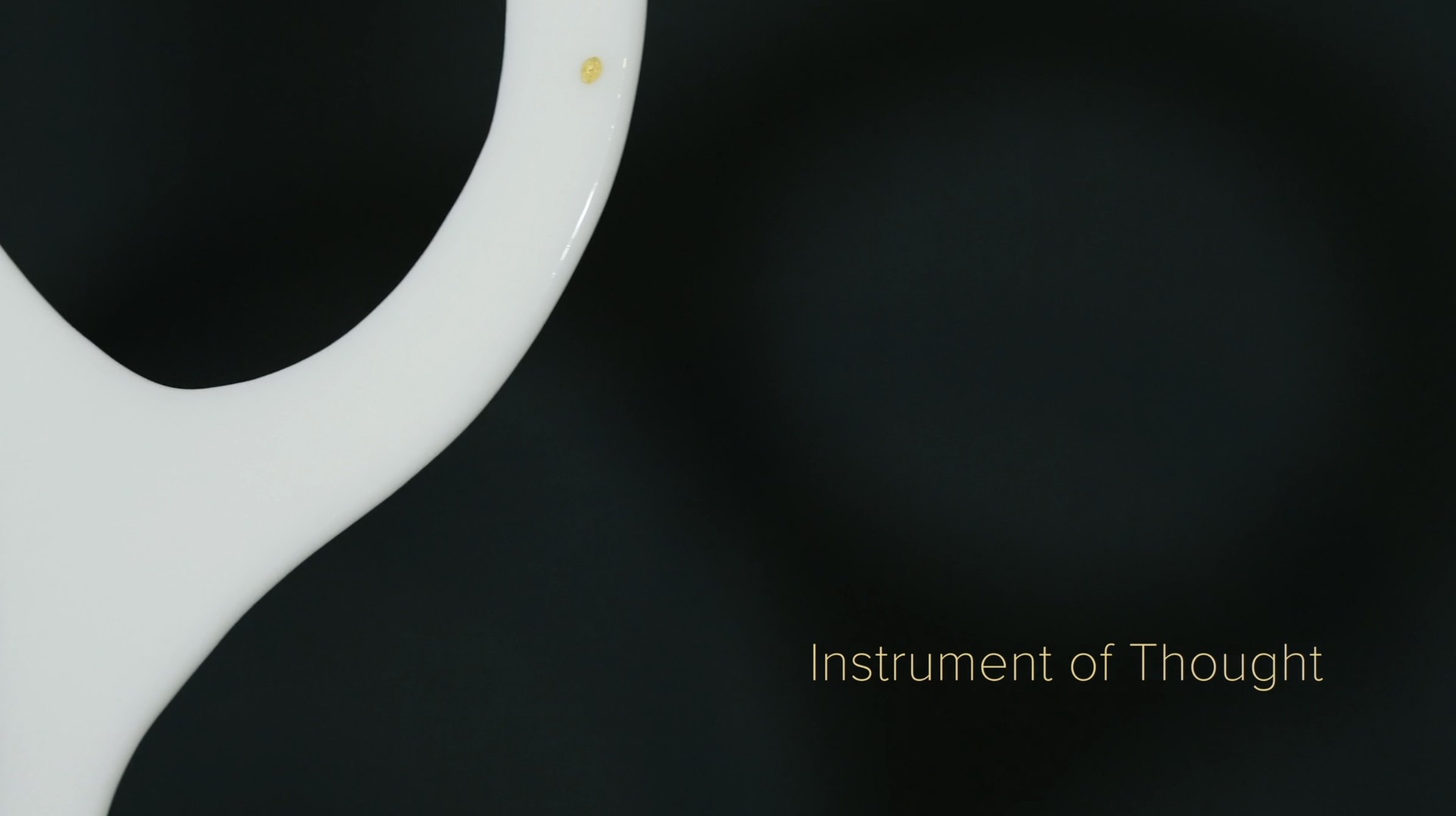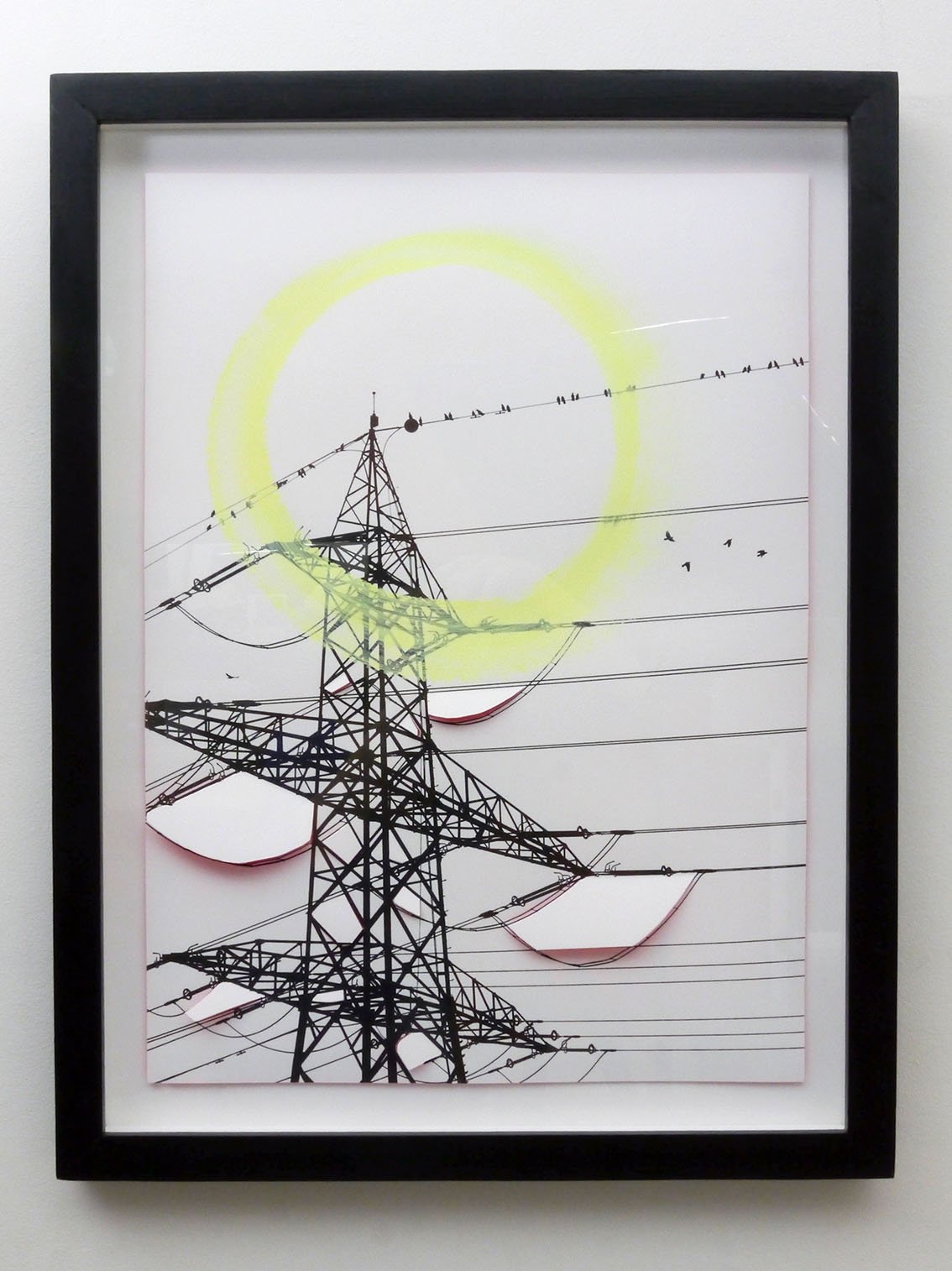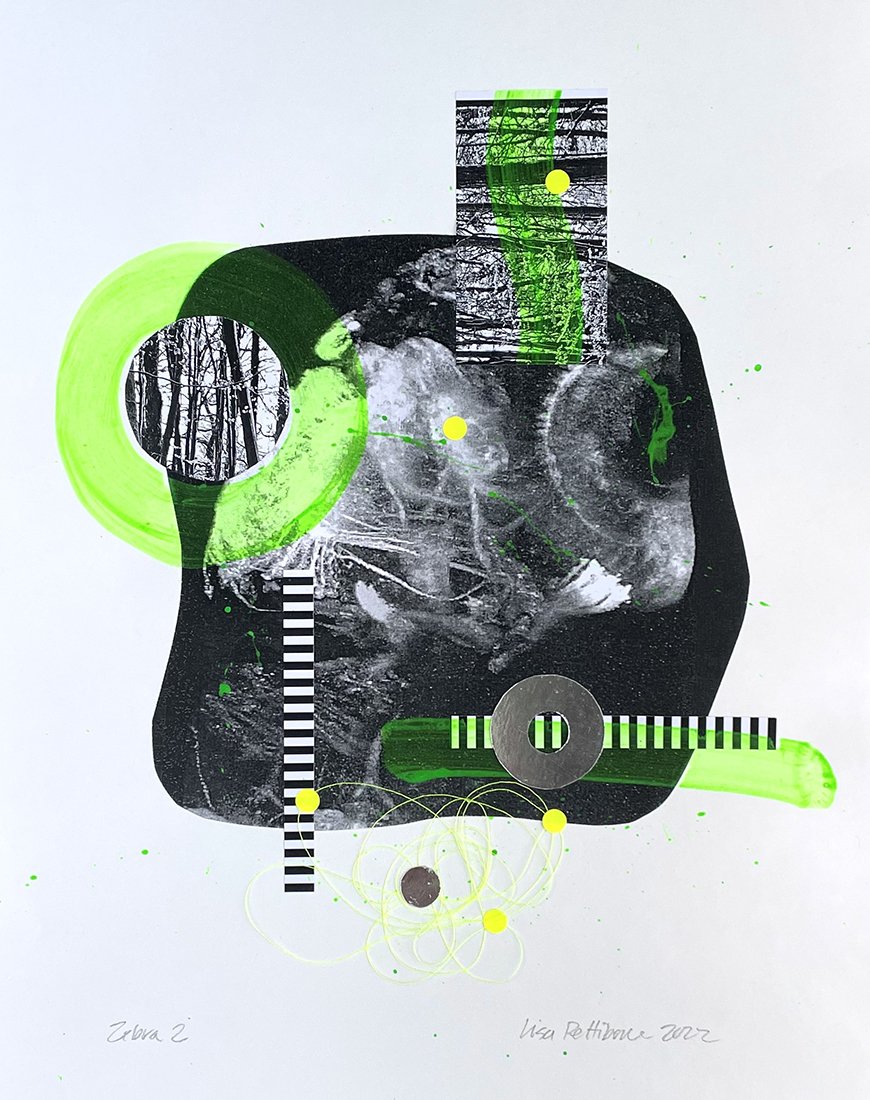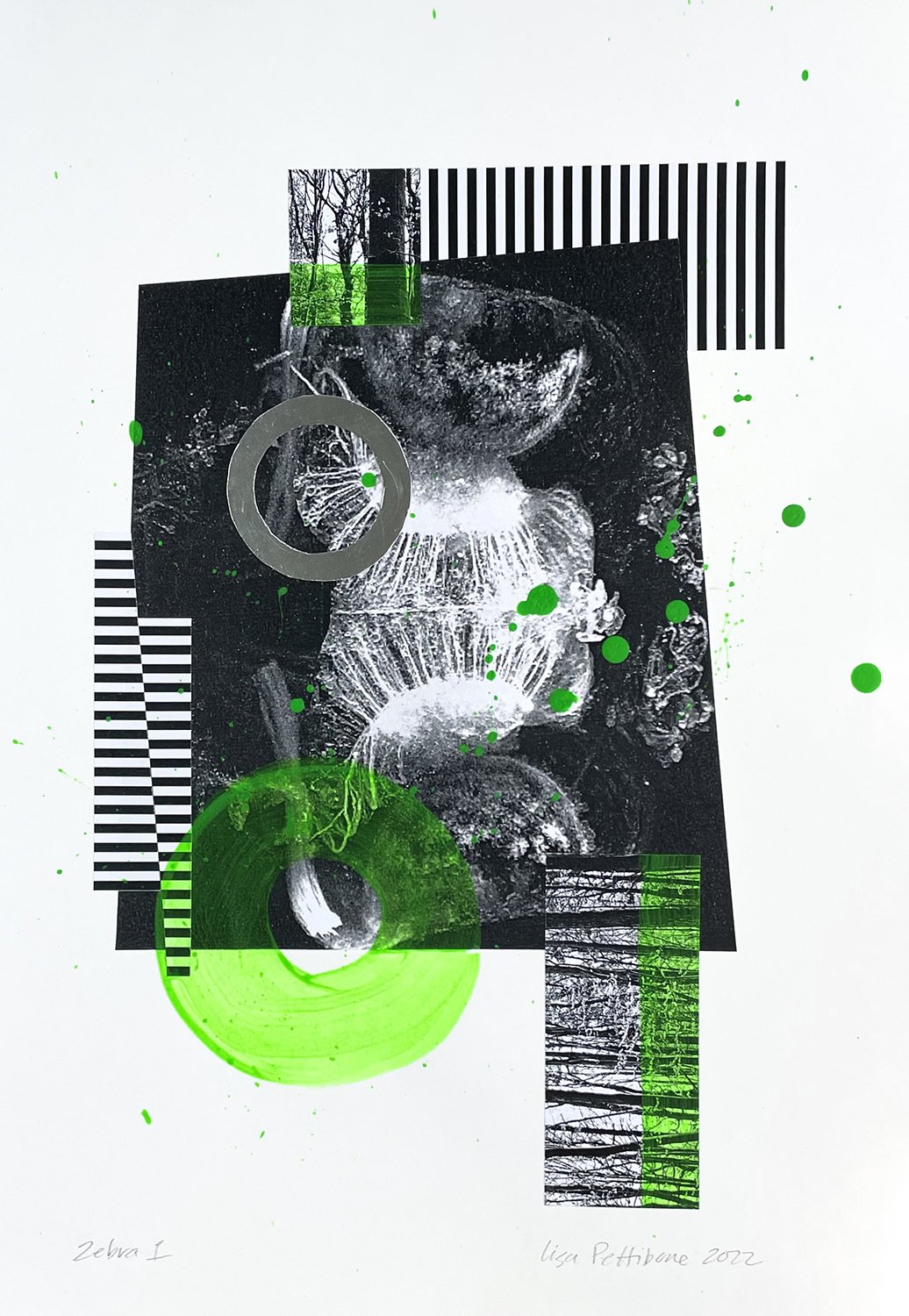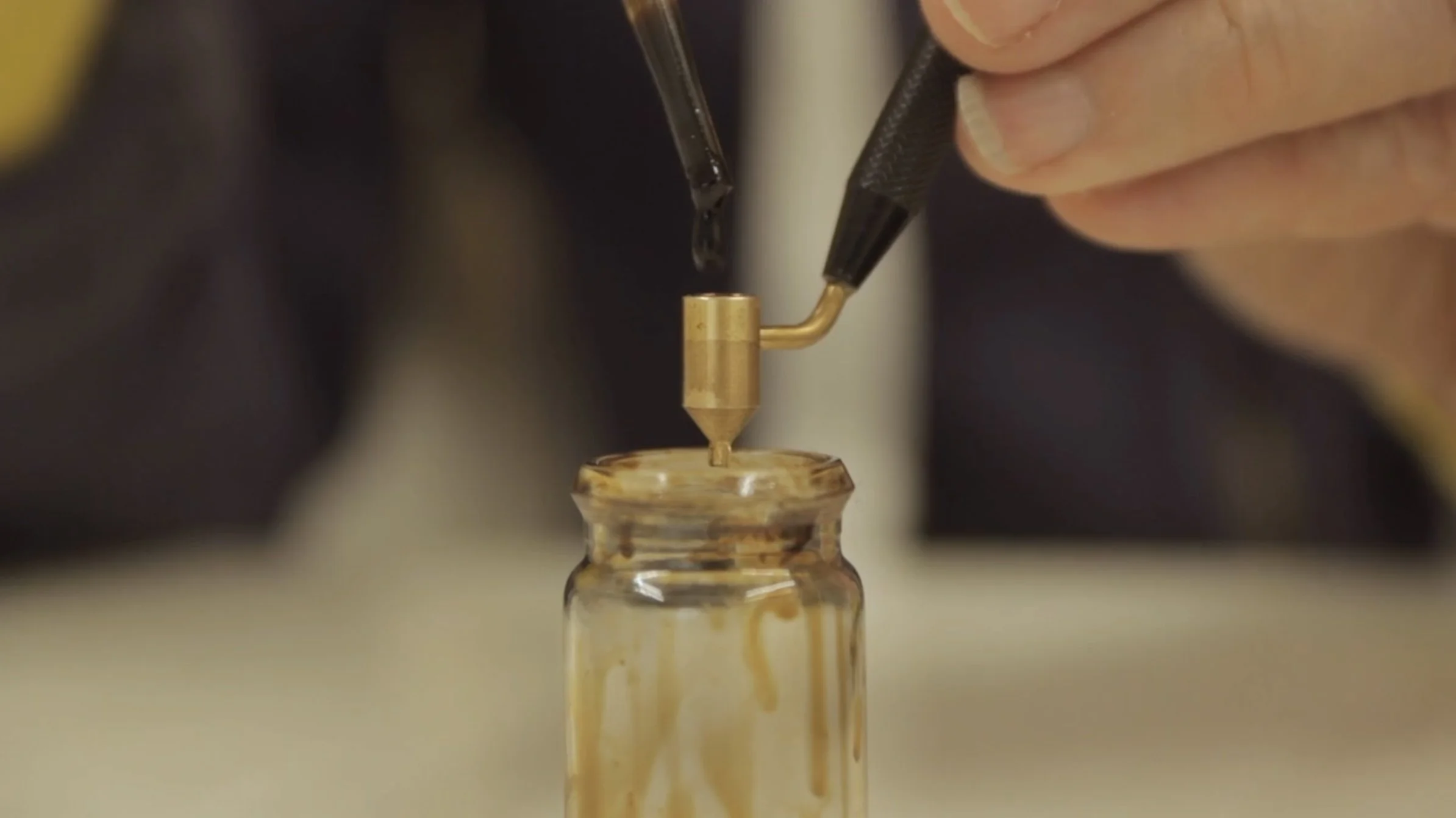11 SPOTLIGHT: LISA PETTIBONE
UK-based Californian artist, Lisa Pettibone, is a dynamic proponent of interdisciplinary creativity. Following training and experience in graphic and glass design, her fascination with intermixing fields lead to an MA in Art and Science from Central Saint Martins in London and a residency at Mullard Space Science Laboratory, UCL, from 2018-2019. Pettibone’s central scientific interests currently lie in astronomy and physics – investigating the cosmos through a wide variety of sculptural, installation, and print works. Indeed, one of her multi-material sculptures –Verdant, 2022 – was sent to the International Space Station earlier this year, as part of their Moon Gallery ISS Test Mission. Other projects have focused on silicon particle detectors, entropy, time, and include Instrument of Thought: A Meditation on Matter and Light, 2022, which explores the astrophysical principals of gravity, dark matter, and the speed of light. We caught up with the artist to discuss her beautifully detailed work, her experiences of sciart collaboration, and her future projects.
Instrument of Thought: A Meditation on Matter and Light, 2022
Kathryn Croxson: Which of the materials you use are the most challenging, surprising, or rewarding, and why?
Lisa Pettibone: Glass is by far the most challenging material I use – perhaps that’s why I don’t become bored with it! Glasswork is very process driven, as it is a material which requires building slowly in stages and which involves other materials to support it, such as moulds, props, and kilns. I don’t blow hot glass but work with it in a kiln, usually fusing then bending it in stages. Each phase presents its own challenges and set backs frequently occur, but if one is patient and methodical (and take copious notes) then you’ll be rewarded with its amazingly luminous and elastic qualities. The challenge must suit me because I’ve been studying and pushing its capabilities for over 25 years.
On the other hand, I enjoy the immediacy of fabric. Using stretchy fabrics means I can make big things quickly and use the weight of glass to transform the shape. It’s interesting to make work that looks as though it’s in the process of transformation and the viewer is encountering it at a specific moment in time.
Paper folding and bending is also very satisfying … I’m endlessly enamoured by work which transitions between 2D and 3D. Glass, fabric, and paper all start as 2D sheets but my job is to push them to become 3D forms.
KC: We’re very interested in your process. Could you tell us about your experiences of incorporating scientific elements into your artistic practice?
LP: Scientific concepts, if you spend time with them, add another perspective to the world and enrich creativity. I investigate by reading (sometimes published papers), watching videos, meeting scientists or spending time at their labs. Eventually, a specific concept will stay with me as quite peculiar or contradictory (like dark matter) and I follow it down a rabbit hole of investigation. The philosophical implications and adjunct sensations of the concept radiate and spark creative paths, as an alternative to the precise data that a scientist might use to map their theories. Often ideas emerge while I’m having a conversation with someone in their lab, surrounded by equipment in what is an unfamiliar environment for me. For example, when I visited the CMS experiment at CERN, 150 ft underground, and faced the enormous detector engulfed with wires, I was struck by how this huge experiment was constructed to record the tiniest particles known to man. Nature is elusive but humans are curious and determined.
KC: What new materials or scientific disciplines would you be interested to explore in future?
LP: I’d love to play with aerogel – it’s 99.8 % air + gas, so essentially weightless. Far from being gel-like it is a solid, dry, and luminous material that’s strong but is a poor heat conductor. I’m not sure what I’d make with it but I’d love to investigate its potential as an art material.
Astronomy and physics really interest me, but neuroscience is also fascinating. How humans build perception is intriguing and, in that regard, cognitive neuroscience is always on my radar. While studying gravity during my MA Art and Science at CSM, I worked with Dr Elisa Ferré, now at Birkbeck University, a neuroscientist who was devising experiments on the vestibular system to test our aesthetic preference for the vertical. Her tests showed that visually upright objects might appear to be more ‘appealing’ due to the influence of gravity on the body. Humans have evolved with the force, in a shared environment, where standing upright is a positive signal (not dead) and we are surrounded by erect trees, grass and animals etc. Aesthetics is framed by neuroscience.
More recently, I took part in the Pint of Science initiative at the Peckham Levels London presenting work responding to the research of Prof Robert Hindges. He’s a Developmental Neurobiology scientist at Kings College London studying the retina of infant Zebra fish and their reaction to vertical and horizontal clues in their environment. He believes the retina is actually a powerful processor of visual stimulus before it reaches the brain. I made three collages related to this (the lab bought one!).
KC: Which is your most important or favourite tool and why?
LP: A glass scoring tool or a scalpel. I love cutting things. It’s a throw back to my time as a graphic designer, cutting paper, film, cardboard, plastic to mock up brochures and packaging before computers took over. (Age alert, in my 20’s I worked in San Francisco for a graphic designer who designed one of the first Apple corporate brochures while also a designing shoeboxes for a fashion client in New York).
KC: How and to what degree do constraints affect your pieces?
LP: Certainly production costs are always and issue, for example glass sculpture is expensive to make. But the constraints (some are technical) of making sculpture or installation are part of forming the work. I see the limits as ultimately a positive thing, spurring me to ever more inventive ways to realise my ideas. The problem-solving process is stimulating – perhaps that’s why I respect science so much. Scientists are methodical, determined yet endlessly creative thinkers.
Emerging Light, Mullard Space Science Laboratory (UCL), 2019
KC: What do you think is important about art and artistic practice?
LP: Art is a reflection of culture, so as we evolve, for example, into a space faring people, we’ll rely on art to absorb the changes and the experiences we have. Alongside science and technology, art gives us a well-rounded view of humanity’s existence and where it might be headed. That’s why I’m so keen to support art in space exploration. Recently I contributed to the Moon Gallery ISS Test Mission, the first gallery in space showing the work of 64 international artists. The initiative makes room for all of humanity as we expand into space and aims to place a similar gallery on the Moon in the next few years.
KC: Could you tell us about any projects you are working on at the moment, or those in the pipeline for the future?
LP: I’m currently finishing a series of glass wall pieces called Inner Gaze and Plenum. Platinum lustred glass universes are drawn on to black glass then slumped so the form is ‘bubbled’ and rippled. Together they acknowledge the mental images of the cosmos that we all carry in our imaginations as a result of seeing the night sky or astronomical images from Hubble for example. From these imaginings we create an inner landscape of the universe – the cosmos inhabits our minds and we inhabit the cosmos.
I’ve recently completed an artwork plaque for ESA’s Euclid Mission due to launch in early 2023. The Fingertip Galaxy painting was a collaboration with MSSL Euclid Science Lead, Tom Kitching, and over 250 scientists and engineers. We devised an artwork to express the personal contributions of a large international team and the spirit of the mission. The A5 plaque is also etched with lines from a poem by Simon Barraclough and is now fixed to the spacecraft for its launch next year.
I spoke to NASA JPL in October and, during that trip, I began working with an archivist at Carnegie Observatory in Pasadena to investigate the Edwin Hubble glass plate photos taken in 1923 of the Andromeda Galaxy. These images mark a perceptual shift in the size of the universe … proof that the Andromeda Nebula was actually another galaxy. I’ll be using digital of copies these in a new screen print or collage next year.
And I have had several conversations with Prof Richard Massey at Durham University about the influence of dark matter on galaxy development and hope to learn more about the Eagle Project simulations envisaging this process. They show the turbulent life of galaxies colliding, stretching and transforming as they move through the universe over billions of years – I’m super interested in the aesthetic qualities of this process and how science perceives shape.
For more on Lisa Pettibone and her work, please visit her website here.
And she is currently showing at the following exhibitions:
19-23 December 2022
Winter Solstice
Fronteer Gallery
Sheffield
https://www.fronteer.co.uk/exhibitions
6 November-6 January 2023
Breathing Out
ArtCan
Virtual ArtCan group exhibition focusing on climate change, curated by Catherine Fenton, Hannah Pratt, and Lawrence Mathias
https://www.artcan.org.uk/virtual-gallery/
All images and videos shown courtesy of Lisa Pettibone © Lisa Pettibone


